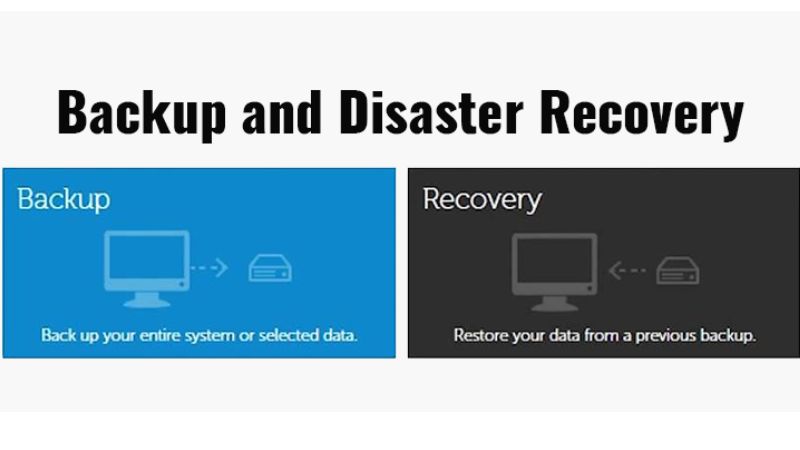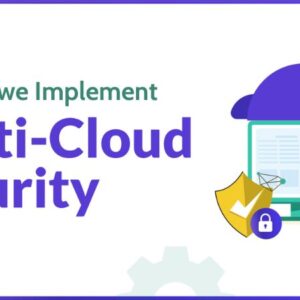14 Best Practices Cloud Implementation for Success
1. Define Clear Objectives:
The foundation of any successful cloud initiative lies in clearly defined objectives. Before embarking on your cloud journey, identify the specific goals you aim to achieve, whether it’s reducing costs, enhancing scalability, or accelerating time-to-market. By having a clear vision, you can align your cloud strategy with your business objectives and measure success effectively.
2. Choose the Right Cloud Model:

With a plethora of cloud options available, it’s crucial to choose the right cloud model that aligns with your organization’s needs. Evaluate the benefits and trade-offs of public, private, and hybrid cloud solutions based on factors such as data sensitivity, compliance requirements, and scalability demands. Selecting the appropriate cloud model lays the groundwork for a robust and flexible infrastructure.
3. Security:
Security is paramount in the cloud environment, where data is often distributed across multiple locations and accessed remotely. Implement a multi-layered security strategy encompassing encryption, access controls, identity management, and regular security audits. Adhere to industry standards and compliance regulations to safeguard sensitive information and mitigate security risks.
4. Data Backup and Disaster Recovery:
In the event of unforeseen incidents or outages, having robust data backup and disaster recovery mechanisms in place is essential. Establish automated backup processes and redundant data storage to ensure data resilience and continuity of operations. Regularly test your disaster recovery plans to validate their effectiveness and readiness.

5. Cost Management:
Cloud adoption can lead to significant cost savings, but without proper management, it can also result in unexpected expenses. Utilize cost management tools provided by cloud providers to monitor and optimize your cloud usage. Implement cost-saving strategies such as reserved instances, rightsizing, and auto-scaling to optimize resource utilization and minimize expenditure.
6. Scalability:
Cloud computing offers unparalleled scalability, allowing organizations to scale resources up or down based on demand. Design your applications with scalability in mind, leveraging cloud-native services such as containers, serverless computing, and elastic load balancing. Ensure your architecture can seamlessly accommodate fluctuations in workload without compromising performance.
7. Performance Optimization:
Fine-tune your applications and infrastructure for optimal performance in the cloud environment. Utilize caching mechanisms, content delivery networks (CDNs), and performance monitoring tools to identify and address bottlenecks. Continuous performance optimization ensures that your cloud-based applications deliver exceptional user experiences.
8. Automation:
Automation is the key to streamlining cloud operations and accelerating time-to-market. Implement automation tools and processes for provisioning, deployment, scaling, and management tasks. Embrace DevOps practices such as continuous integration, continuous delivery (CI/CD), and infrastructure as code (IaC) to automate and standardize workflows across your organization.
9. DevOps Practices:
Foster collaboration between development and operations teams by embracing DevOps culture and practices. Break down silos and automate manual processes to accelerate software delivery and improve quality. Implement CI/CD pipelines to enable rapid and reliable deployment of code changes, fostering agility and innovation.

10. Monitoring and Logging:
Gain visibility into your cloud infrastructure by implementing comprehensive monitoring and logging solutions. Monitor key metrics such as resource utilization, performance, and security incidents in real-time. Centralized logging and monitoring tools enable proactive detection of issues and facilitate timely troubleshooting, ensuring the health and performance of your cloud environment.
11. Compliance and Governance:
Adhere to regulatory requirements and industry standards relevant to your business vertical. Implement governance policies, access controls, and audit trails to ensure compliance with data protection and privacy regulations. Regularly review and update your compliance posture to mitigate risks and maintain trust with customers and stakeholders.
12. Training and Education:
Invest in training and upskilling your teams to effectively leverage cloud technologies and best practices. Provide ongoing education and certification opportunities to ensure your workforce remains proficient in cloud computing concepts and tools. Encourage a culture of continuous learning and experimentation to drive innovation and excellence.
13. Vendor Management:
Establish strong partnerships with your cloud service providers and maintain open communication channels. Regularly review service level agreements (SLAs) to ensure they meet your business requirements and hold vendors accountable for performance and reliability. Consider multi-cloud or hybrid cloud strategies to mitigate vendor lock-in risks and maximize flexibility.
14. Regular Reviews and Optimization:
Continuously evaluate and optimize your cloud infrastructure, applications, and processes to maximize efficiency and value. Conduct regular reviews of your cloud usage and performance metrics to identify areas for improvement. Iterate on your cloud strategy based on feedback and changing business needs, ensuring that your cloud implementation remains aligned with your organizational goals.
Final Thought
In conclusion, mastering the art of cloud implementation requires adherence to best practices at every stage of the journey. By defining clear objectives, choosing the right cloud model, prioritizing security, and embracing automation and DevOps practices, organizations can unlock the full potential of cloud computing. Continuous optimization, education, and vendor management are essential for ensuring long-term success in the ever-evolving landscape of cloud technology. Embrace these best practices cloud implementation, and embark on your cloud journey with confidence and clarity.





